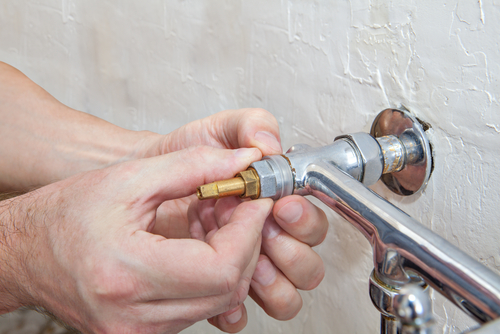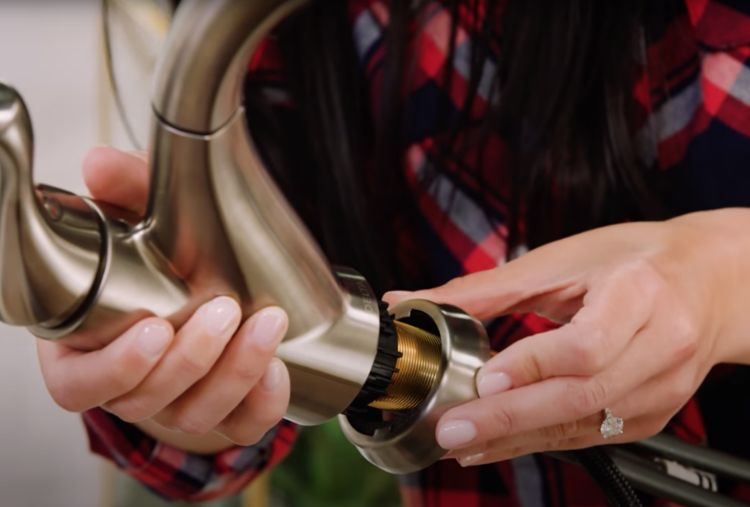We have stumbled upon this post on 4 Common Reasons for a Leaky Faucet listed below on the net and decided it made perfect sense to write about it with you on my blog.

Dripping faucets could feel like a small trouble, however their effect exceeds just the annoyance of the sound. From drainage to sustaining unnecessary monetary costs and health threats, neglecting a dripping tap can cause various effects. In this post, we'll delve into why it's essential to resolve this typical household problem promptly and successfully.
Wastage of Water
Ecological Impact
Leaking taps contribute substantially to water waste. According to the Epa (EPA), a solitary tap dripping at one drip per second can lose greater than 3,000 gallons of water per year. This not only stress water sources yet additionally affects communities and wild animals based on them.
Financial Prices
Raised Water Costs
Past the ecological influence, trickling faucets can inflate water expenses significantly. The collected waste gradually equates into higher energy expenditures, which could have been prevented with timely repair work.
Potential Building Damages
Moreover, long term dripping can bring about harm to fixtures and surface areas surrounding the tap. Water build-up can cause discoloration, corrosion, and also structural problems if left unattended, leading to additional fixing expenses.
Wellness Issues
Mold And Mildew and Mold Growth
The continuous visibility of moisture from a leaking tap develops an optimal environment for mold and mold development. These fungis not just compromise indoor air quality however additionally posture health risks, particularly for people with respiratory system problems or allergic reactions.
Waterborne Illness
Stationary water in leaking faucets can become a breeding ground for bacteria and other virus, raising the risk of waterborne conditions. Impurities such as Legionella germs flourish in stagnant water, possibly causing major illnesses when consumed or inhaled.
Do it yourself vs. Expert Repair
Advantages and disadvantages of Do It Yourself Repair Service
While some might attempt to fix a leaking tap themselves, DIY fixings come with their very own collection of difficulties. Without correct understanding and devices, DIY attempts can worsen the concern or result in incomplete fixings, prolonging the problem.
Benefits of Hiring an Expert Plumber
Employing a professional plumber makes certain that the underlying root cause of the dripping tap is resolved efficiently. Plumbing professionals possess the knowledge and devices to detect and fix tap problems effectively, saving time and reducing the risk of more damages.
Step-by-Step Overview to Repairing a Dripping Faucet
Devices Needed
Prior to attempting to fix a trickling faucet, collect the needed tools, consisting of an adjustable wrench, screwdrivers, replacement components (such as washers or cartridges), and plumber's tape.
Typical Faucet Issues and Their Solutions
Identify the kind of tap and the certain concern triggering the drip. Usual problems consist of worn-out washers, rusty valve seats, or malfunctioning O-rings. Describe producer instructions or on the internet tutorials for detailed advice on repair work.
Safety nets
Normal Upkeep Tips
To prevent dripping faucets, carry out regular upkeep such as cleaning aerators, examining for leaks, and replacing worn-out parts quickly. Furthermore, think about setting up water-saving devices or upgrading to more efficient fixtures.
Significance of Prompt Repair Works
Dealing with dripping taps as quickly as they're observed avoids further water wastefulness and prospective damage, inevitably conserving both water and money in the future.
Effect On Property Worth
Perception of Well-Maintained Building
Preserving a residential property in good condition, including attending to upkeep concerns like dripping faucets, boosts its regarded worth and value amongst possible purchasers or tenants.
Influence on Resale Worth
Properties with well-kept plumbing components, including taps, command higher resale worths in the real estate market. Attending to leaking taps can add to a favorable perception throughout property evaluations and arrangements.
Ecological Obligation
Individual Contribution to Preservation
Taking duty for taking care of leaking faucets straightens with more comprehensive efforts toward water preservation and environmental sustainability. Every person's actions jointly make a considerable impact on maintaining valuable sources.
Lasting Living Practices
By prioritizing timely repairs and taking on water-saving practices, people contribute to lasting living methods that profit both present and future generations.
Final thought
Resolving a dripping tap surpasses mere comfort; it's an essential step towards preserving water, reducing economic prices, and safeguarding health and wellness and residential property. Whether via do it yourself repairs or professional support, acting to repair leaking faucets is a small yet impactful way to advertise accountable stewardship of resources and contribute to a healthier, more lasting future.
How to Fix a Leaky Faucet: Step-by-Step Repair Guide
A leaky faucet may seem like a simple annoyance, but if it's not fixed promptly, that leak could cost hundreds to potentially thousands. From water damage to mold, mildew, and high water bills, even a tiny leak can be catastrophic if left unattended. Damage like this can even affect the overall value of your home, so it's important to take the right approach for leaky faucet repair. You may need the help of a plumber in some cases, but we've got a few tips you can try on how to fix a leaky faucet before calling the pros.
Four Faucet Types
When you're learning how to fix a leaky faucet, the first step is knowing what kind of faucet you're working with! There are four common types.
Cartridge Faucets
Cartridge faucets come in one- or two-handled varieties. In one-handled cartridge faucets, hot and cold water combines in a single cartridge. In the two-handled versions, hot and cold water are controlled separately and mixed in the faucet.
Ball Faucets
Ball faucets have a single lever you push up and down to adjust the pressure and rotate to change the temperature. A slotted metal ball controls the amount of water allowed into the spout.
Compression Washer Faucets
They're the oldest type of faucet, but they're still used in many homes — especially older ones. Compression faucets have two separate handles that, when turned, raise or lower the washer that seals a water valve. This valve stops water from flowing through the faucet when it is turned off.
Disc Faucets
Disc faucets rarely need to be repaired due to their maintenance-free design. The water flow is controlled by two discs — the upper one raises and lowers against a fixed lower disc, creating a watertight seal. If your disc faucet starts leaking, you may need to replace the seals or clean residue buildup from the inlets.
Fixing a Leaky Faucet
Step 1: Turn Off the Water
Whether you're learning how to fix a leaky bathtub faucet or how to fix a leaky kitchen faucet, always turn off the water supply to your working area when you're fixing a leak. The last thing you want is a flood added to your list of things to fix.
Look for the shutoff valves below your sink or around the tub and turn them clockwise to stop the water flow. If your faucet doesn't have shutoff valves, you may need to turn off the water for the whole house. Check to make sure it's off by turning the faucet on. If nothing comes out, you're ready to start the repair.
Step 2: Take Apart the Faucet
How you disassemble your faucet depends on the type of fixture you have. You can use a flathead screwdriver to remove the caps on top of the handle or handles for cartridge and compression faucets. Inside, you should see handle screws. Unscrew these with a screwdriver to remove the handle.
Disc- and ball-style faucets will typically have an inlet screw near the handle, and removing that will reveal the interior of the faucet.
Detach the Valve Stem
For cartridge- and compression-style faucets, you'll see the inner valve stem or cartridge once you remove the faucet handles. If you have a compression faucet, unscrew the brass valve stem. If you have a cartridge faucet, pull out the cartridge. If your cartridge has been in place for a while, it may require some tools or extra force to remove it due to mineral deposits.
Examine and Replace Parts
Once you've removed the parts, check them out to confirm what needs to be replaced. You may see corroded rubber washers, O-rings, stems, or cartridges. On a ball-style faucet, check the seats and springs for damage.
If you need to repair a leaky disc faucet, check the inlet and seals on the lower disc.
Once you determine what parts must be replaced, visit your local hardware store. Bring the damaged parts with you to ensure you can purchase the correct components to replace them.
Clean Valves and Faucet Cavity
If you've removed a stem or cartridge, you may notice mineral buildup in the faucet's threads. Use white vinegar to clean the valve seat by soaking it for a few minutes, then scrub it away with a soft toothbrush and rinse with warm water. You can also clean the interior of the faucet in the same way.
Reassemble the Faucet
Once your faucet is cleaned and the required parts have been replaced, it's time to reassemble it. Put the pieces back together and slowly turn the water supply back on. Doing this slowly is crucial because too much initial water pressure can damage the new hardware you've just installed.
https://homewarranty.firstam.com/blog/how-to-fix-leaky-faucet

Hopefully you enjoyed reading our topic on Should I Repair or Replace a Leaky Faucet?. Thanks for spending some time to read our article post. Loved our blog? Please quickly share it. Help somebody else locate it. I appreciate reading our article about Should I Repair or Replace a Leaky Faucet?.
 Mr. T Then & Now!
Mr. T Then & Now! Ross Bagley Then & Now!
Ross Bagley Then & Now! Shannon Elizabeth Then & Now!
Shannon Elizabeth Then & Now! Dolly Parton Then & Now!
Dolly Parton Then & Now! Jaclyn Smith Then & Now!
Jaclyn Smith Then & Now!